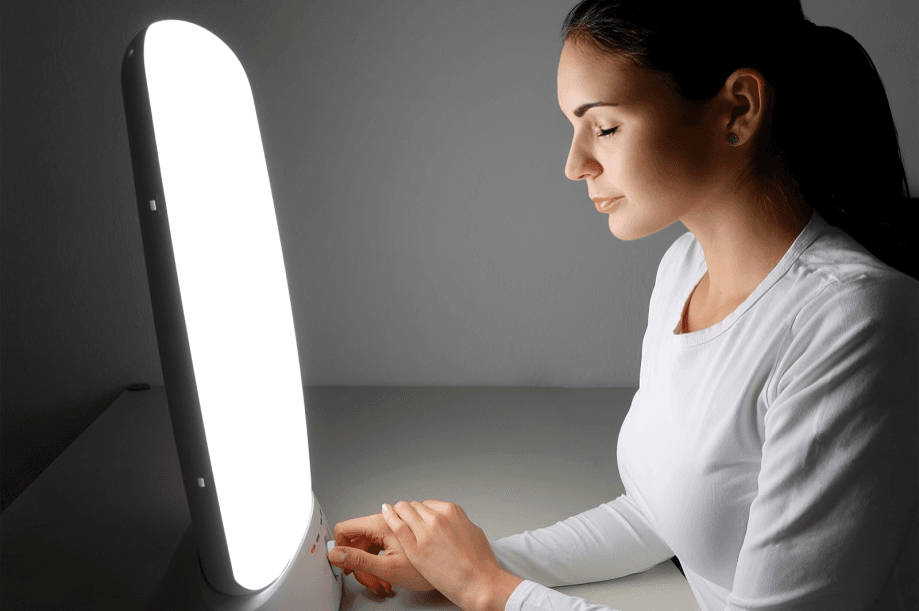
“
Seasonal Affective Disorder (SAD) facts reveal how changes in seasons can seriously impact mood, energy, and mental health. Learning key seasonal affective disorder facts can guide you in recognizing symptoms early and seeking the right treatments. Whether through light therapy, medication, or lifestyle changes, understanding seasonal affective disorder facts can make a real difference in managing emotional well-being throughout the year.1
1
”
Seasonal Affective Disorder (SAD) primarily occurs during fall and winter months when daylight hours become shorter, with symptoms easing as spring and summer bring longer periods of natural sunlight exposure.1
Research shows SAD is more common in regions farther from the equator, where winter daylight hours are significantly reduced, contributing to biological disruptions that can lead to depressive episodes each year.2
Symptoms of SAD often mirror classic depression, including persistent sadness, loss of interest in activities, low energy, difficulty concentrating, changes in sleep patterns, and feelings of hopelessness or worthlessness. 3

Light therapy, also called phototherapy, is one of the leading treatments for SAD, involving exposure to bright artificial light designed to mimic outdoor sunlight and reset internal body rhythms.
Experts recommend using a light therapy box that emits 10,000 lux of cool-white fluorescent light, typically sitting in front of it for about 20–30 minutes each morning during winter months. 4
SAD is recognized in the Diagnostic and Statistical Manual of Mental Disorders (DSM-5) as a major depressive disorder with seasonal pattern, confirming its legitimacy as a clinically diagnosable condition. 5
Exercise is another essential component in managing SAD; regular aerobic activity, especially outdoors when possible, can boost serotonin levels naturally and improve energy, sleep, and overall well-being. 6
Vitamin D supplementation may help manage SAD symptoms, as lower sunlight exposure often leads to deficiencies, and Vitamin D plays an important role in regulating mood and immune function. 7
People experiencing SAD often crave carbohydrates more than usual because lower serotonin levels make the body seek foods that temporarily boost mood, though moderation in diet is recommended. 8
Antidepressant medications, particularly selective serotonin reuptake inhibitors (SSRIs), are sometimes prescribed for SAD, especially for individuals whose symptoms are severe or who do not respond sufficiently to other therapies. 9
Maintaining a structured daily routine, including consistent sleep and wake times, can help regulate circadian rhythms and lessen the impact of SAD symptoms on mental health and productivity. 10

Spending more time outdoors, even on cloudy days, can provide enough natural light to help alleviate symptoms by stimulating serotonin production and helping maintain a healthier biological rhythm.
Dawn simulators, devices that gradually increase light in the bedroom in the morning, can act as a natural alarm clock and help reset the sleep cycle disrupted by SAD. 11
Practicing mindfulness meditation and relaxation techniques can reduce stress levels, encourage positive thinking, and provide emotional resilience against the seasonal mood shifts typical of SAD. 12
Even indoor environments can be optimized by arranging furniture near windows, using sheer curtains, and keeping rooms bright to maximize exposure to available natural sunlight throughout the day. 13

Traveling to sunnier destinations during winter months, if feasible, can provide a boost of natural light exposure and psychological relief, temporarily alleviating symptoms of Seasonal Affective Disorder.
The onset of SAD usually begins in young adulthood, with most diagnoses occurring between ages 18 and 30, although children and older adults can also be affected by seasonal depression. 14
Melatonin production, a hormone regulating sleep, may increase with longer nights and shorter days, disrupting circadian rhythms and contributing to fatigue and sleep disturbances associated with SAD. 15
Psychiatrists emphasize the importance of early intervention when treating SAD; starting therapies at the first sign of symptoms can significantly reduce the disorder’s overall impact and improve recovery rates. 16
Combining multiple approaches, like light therapy, CBT, physical activity, and healthy nutrition, often offers the best outcomes for those managing Seasonal Affective Disorder rather than relying on a single treatment method. 17


